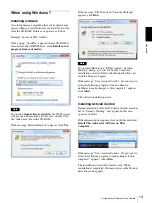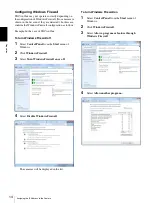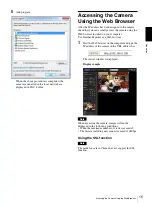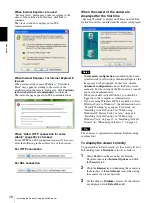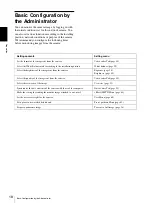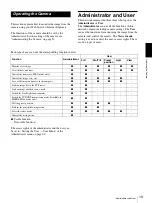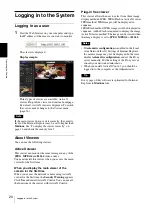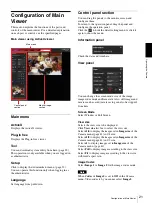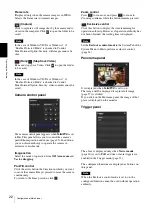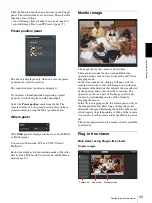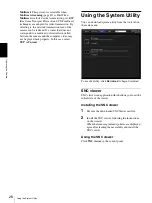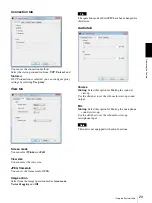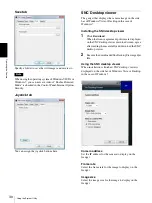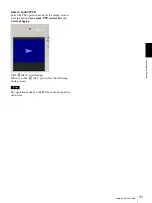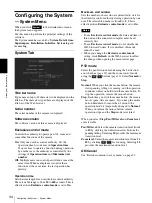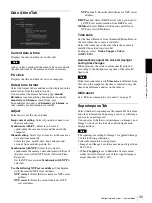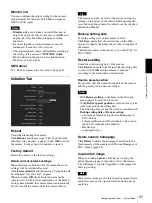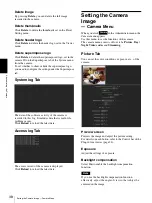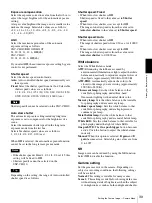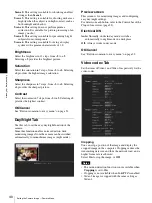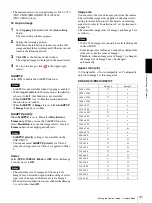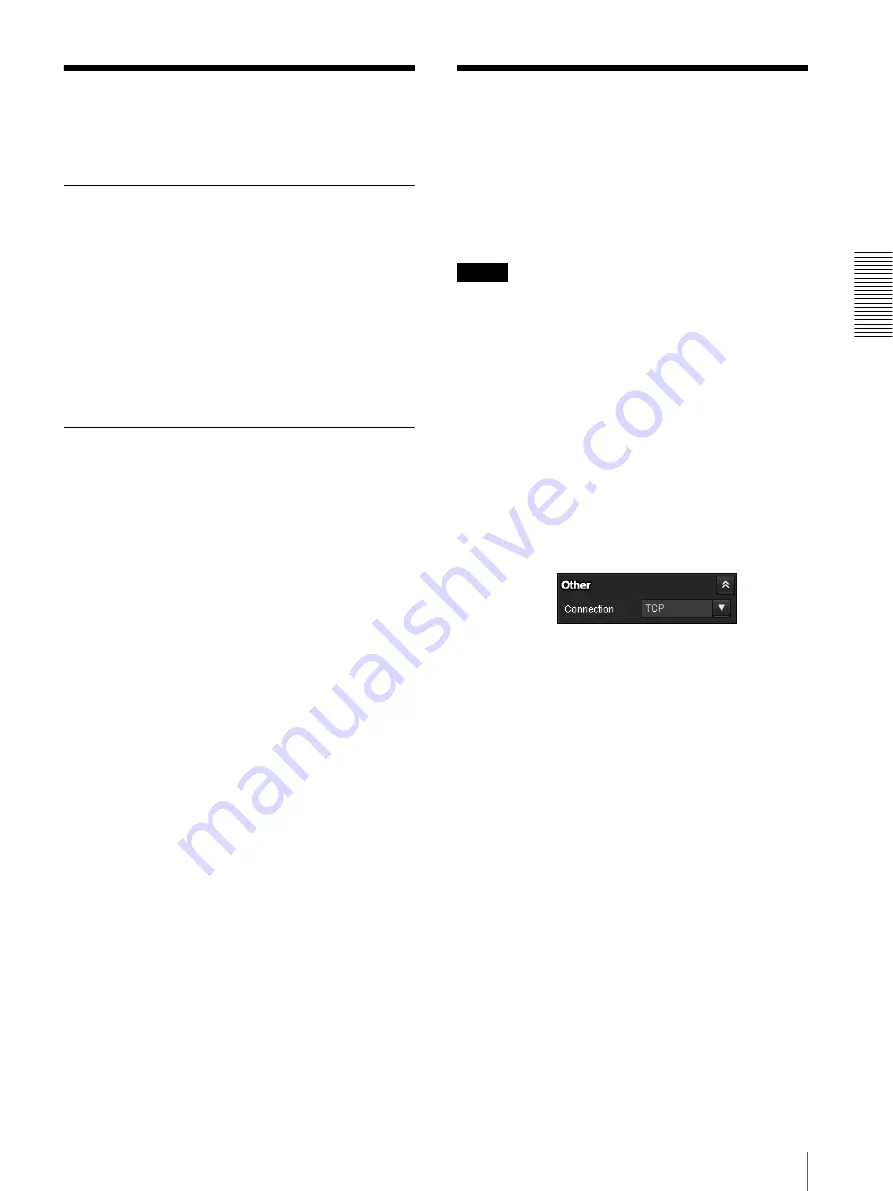
O
per
at
ing
t
he
Came
ra
Using the Trigger Button / Switching TCP/UDP Transmission Mode
27
Using the Trigger Button
You can execute various functions by clicking their
respective buttons on the Trigger panel.
Sending a monitor image via e-mail
You can send a captured still image by attaching it to an
e-mail.
To use this function, you need to make
e-Mail (SMTP)
active and set the address in the Trigger menu of the
Administrator menu properly (page 71).
1
Click
e-Mail (SMTP)
on the Trigger panel.
The still image of the time you click is captured,
and your e-mail with the image file attached is sent
to the specified mail address.
Sending a monitor image to an FTP
server
You can send a captured still image to the FTP server.
To use this function, you need to make FTP active and
set the address in the Trigger menu of the Administrator
menu properly (page 72).
1
Click
FTP client
on the Trigger panel.
The still image of the time you click is captured,
and the image file is sent to the FTP server.
Switching TCP/UDP
Transmission Mode
You can select TCP or UDP as the communication port
for video data.
This function can be used when Mode (video codec
mode) is set to
MPEG4
or
H.264
and the ActiveX
viewer is used.
Notes
• The function may not operate correctly if you use
personal firewall software or antivirus software on
your computer. In that case, disable the software or
select the TCP mode.
• If you are using Windows XP Service Pack 2 or later,
Windows Vista or Windows 7, disable “Windows
Firewall”. For details, see “Configuring Windows
Firewall” in “When using Windows XP Service Pack
2 or later” on page 9, “Configuring Windows
Firewall” in “When using Windows Vista” on
page 11, or “Configuring Windows Firewall” in
“When using Windows 7” on page 14.
1
Select
TCP, Unicast
or
Multicast
from the
Connection
drop-down list in the Others panel.
TCP:
This is normally selected.
When
TCP
is selected as the communication port,
HTTP communication is adopted for video
communication.
HTTP is the protocol used for reading the usual
Web page.
In an environment capable of reading Web pages,
you can watch video by selecting the TCP port.
Unicast:
When
Unicast
is selected as the
communication port, RTP (Real-time Transport
Protocol) is adopted for video communication.
Since RTP is the protocol for running video data,
the video playback is smoother than when TCP
(HTTP) is selected. If a firewall is installed between
the camera and the computer, or depending on the
network environment, video may not be played
back properly when
Unicast
is selected. In this
case, select
TCP
.

